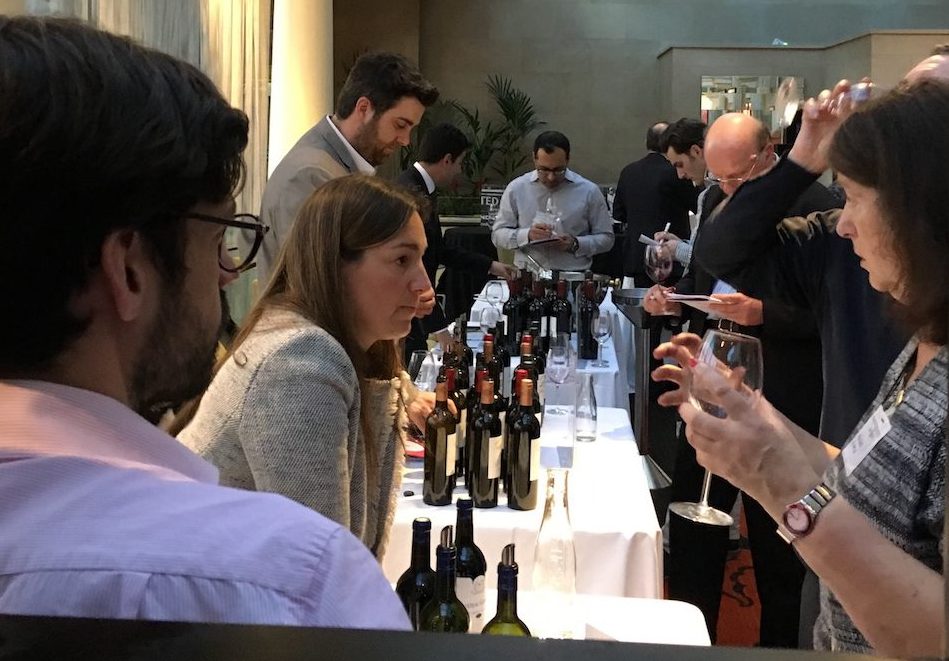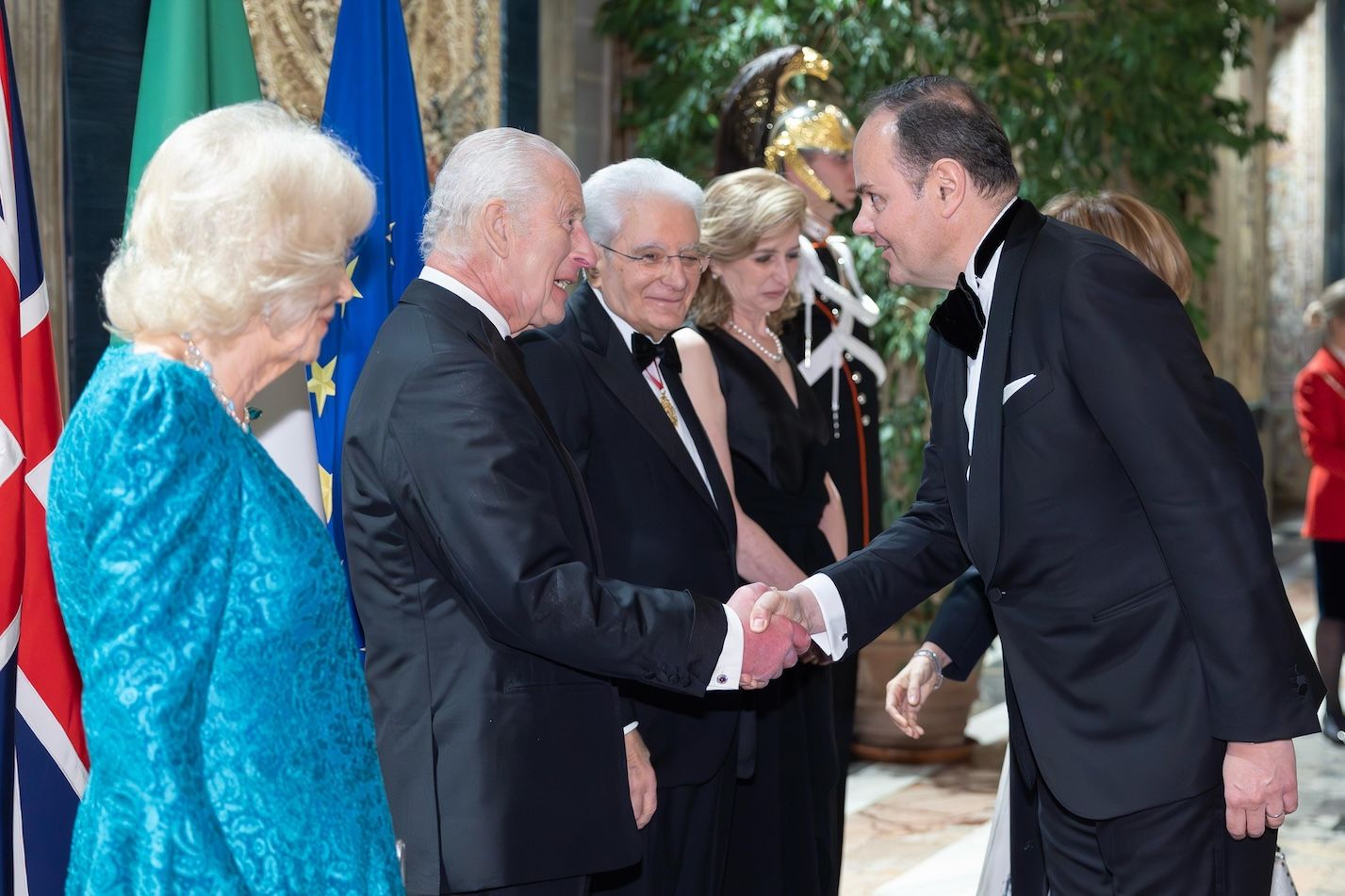Bordeaux 2016 is showing massive variation at this early stage depending upon harvest date, winemaking style and percentage of Merlot in the blend. Wines from 54 chateaux were tasted and 7 things you need to know about the vintage at the end of this article
The Bordelais are never ones to hold back with their bouquets or superlatives. Even when they have an average vintage you are made to feel that it is, in some ways, very special indeed
With the 2016 vintage, however, there was clearly something very good going on when on June 23 last year the sun started shining on Bordeaux and didn’t stop until the crates of ripe grapes were in the winery.
At lunch this month La Conseillante told me that 2016 was going to be “their best vintage ever.” Chateau Angelus a few days later was saying the same thing – that 2016 was going to be up there with the very best.
Grand Cercle Primeurs: the UK’s first vintage tasting of Bordeaux 2016
The first glimpse of Bordeaux 2016 for UK buyers was at the Primeurs 2016 tasting held by Grand Cercle Des Vins De Bordeaux at the Meridien Hotel, London.
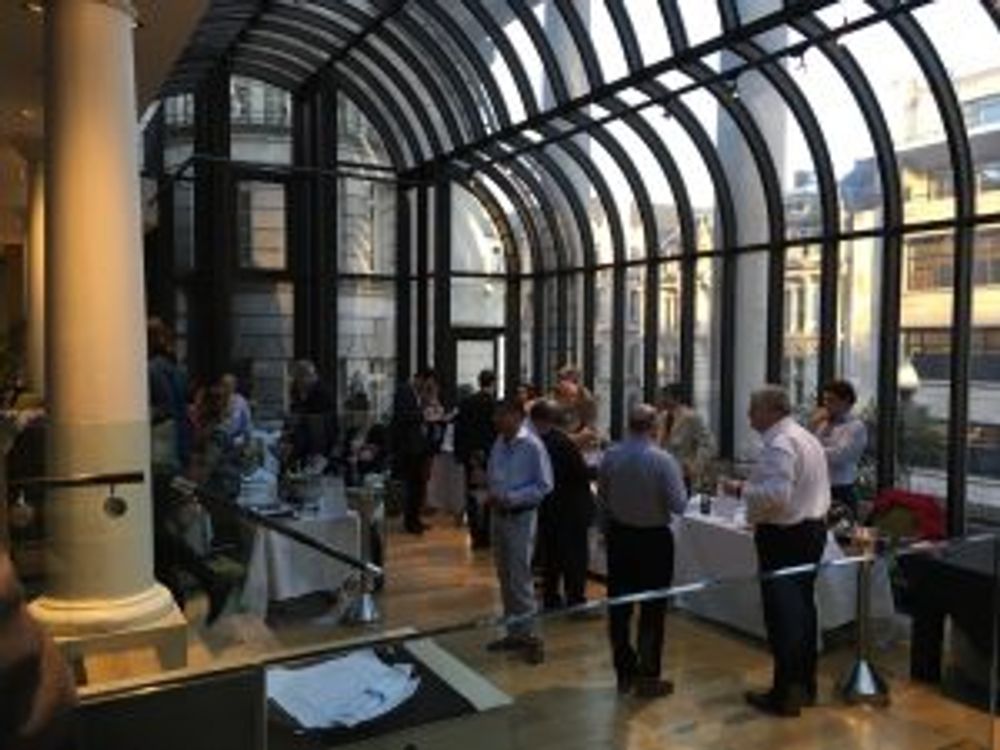
Grand Cercle is an association made up of 164 Bordeaux wine estates across 27 appellations, regardless of the chateaux’s size or reputation. In effect it is a way for lesser know Bordeaux wineries to get seen, heard and tasted – a great opportunity for the UK on-trade to beef up its Bordeaux offering.
First-comers to yesterday’s tasting, apart from the critics such as Jancis Robinson MW and Stephen Spurrier (eager to get a taste of the 16s) were notable big-hitter importers from both on-trade and off.
A common theme of the 54 chateaux represented at the tasting was how few had distribution in the UK, a situation that will hopefully be put right very soon. After all, one of the truisms about a great vintage is that it is in the smaller houses that you get the best value.
2015 in Burgudy, for example, is the perfect year to steer clear of the premium priced top houses and buy from the lesser appellations that were blessed with the same weather, if value for money is your key driver.
Château de Cérons – increasingly a name to watch
One of those showing their wines at the Grand Cercle tasting was Château de Cérons, a relatively new estate from the tiny eponymous appellation, that primarily represents sweet wines.
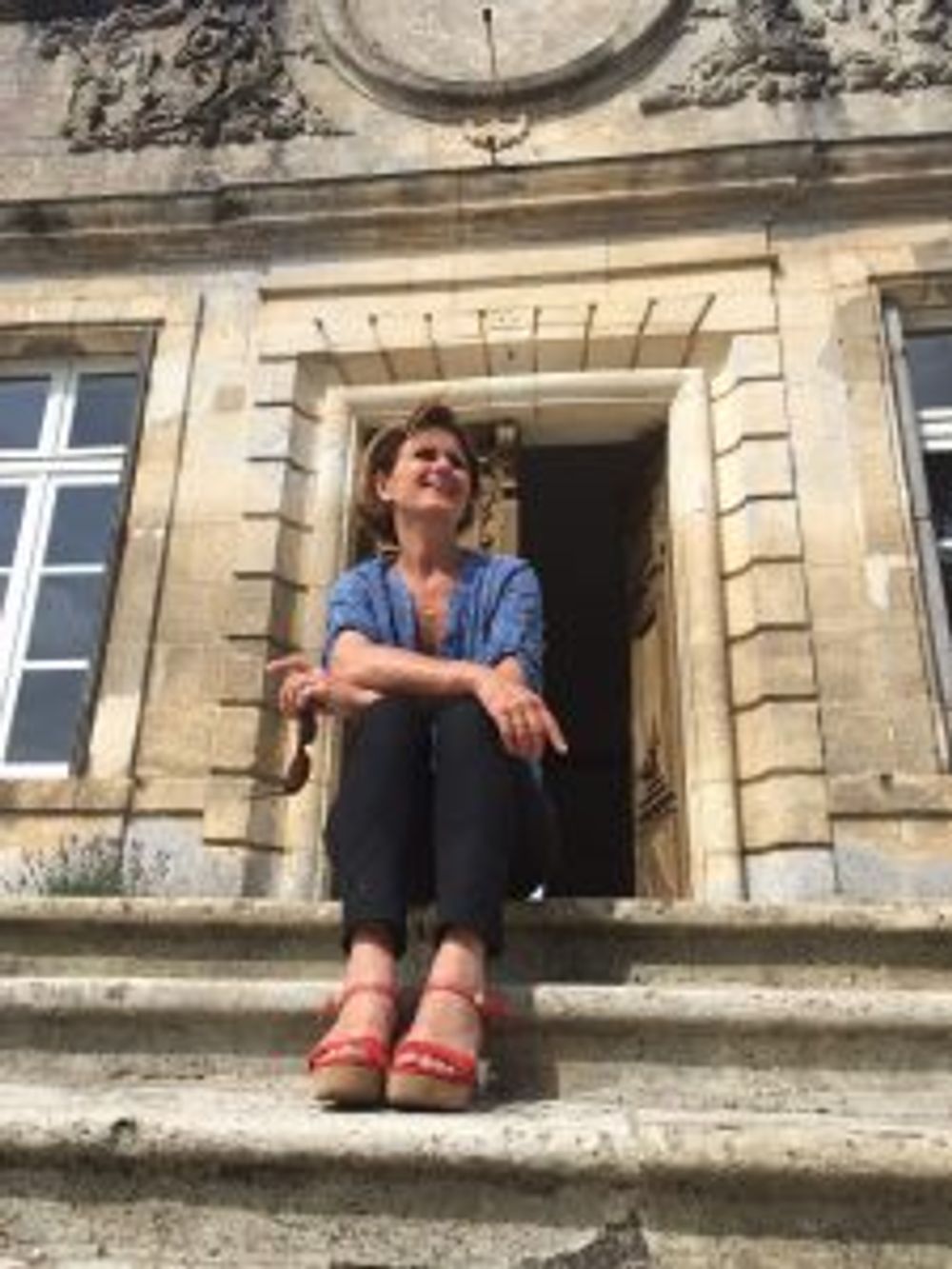
Caroline Perromat of Château Cérons
The last time I saw Peromat was about 18 months ago at her domaine when her husband Xavier had just broken his leg and she was trying to do absolutely everything herself.
“That was a nightmare!” she says, smiling now, as she pours me a glass of her dry white 2016. The prettiness of the bouquet is instant and intoxicating – floral, white fruit. The 2014 she serves alongside has more volume, weight and oiliness which is to be expected with a slightly older white Graves.
“I love the 2016,” she says “the acidity is so fresh.”
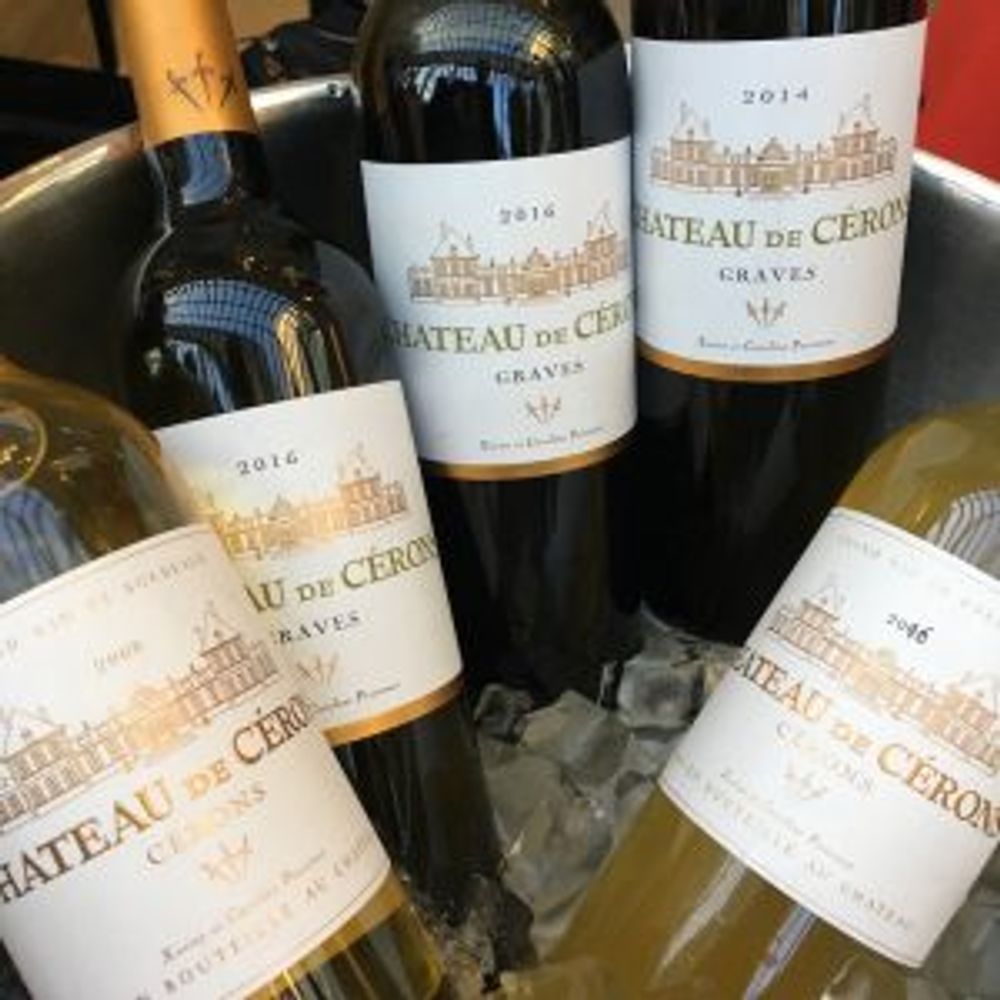
She isn’t joking. Although the wine won’t be finished until June it has a raciness that lasts for minutes in the mouth through clearly very high PH. The layers of flavour augur well for this 55% Semillon/40% Sauvignon Blanc/ 5% Sauvignon Gris blend. Unfinished white Graves has such pretty aromatics of honeysuckle and white peach that it is almost a shame to wait.
The other whites I tried were of a similar make-up – lots of flavour and high acidity, compared to the citrusy more open 2015s. I suspect, however, that not all estates will be the same. Cérons picked early.
As for the reds, Cérons’ (55% Cabernet Sauvignon/ 45% Merlot) blend clearly has very ripe Merlot in it but there is lovely texture in the middle of the wine that clearly predicts great things.
At this stage a great deal of variation between the estates
The message that was coming across at the tasting was that all the fruit was ripe not just the Merlot.
Philippe Austruy of the old Tesseron property Château Malescasse, which is also one of the oldest Cru Bourgeois wineries, said “What is unusual about 2106 is that the Merlot and the Cabernet Sauvignon are both as ripe as each other.”
Jean-Francois Quenin from Saint-Emilion’s Château de Pressac who blends with five grapes – Carménère and Pressac in addition to Merlot and the two Cabernets – was saying the same thing.
Ripeness and forgiveness from the elements at the end of the harvest means that the winemaker has greater latitude on when to pick and what style to go after. Interesting that some winemakers who had a Merlot-dominant blend had been in barrel since early November where some estates hadn’t started harvesting until mid-October.

There were many different styles on show at the tasting so consequently few apt generalisations about the entire vintage. Some wines really had that funk of a barrel sample while others were tasting much more finished.
Particularly impressive, though, was the four wines from Nicolas Robin whose wines have been in barrel since early November. His Rol Valentin was my favourite red wine of the evening. Attractive nose, great balance, and considerable definition in the wine – amazing given how young they are.

I also liked his Cuvée Sacha from Château de Laussac, which is his attempt to prove that you can make a top single vineyard wine in Castillon. (wines available through Thorman Hunt)
There had been some talk that the ripeness of the Merlot might see winemakers, particularly on the Right Bank, turn up the volume on Cabernet Franc to add some structure but there was no evidence of that.
What was evident, though, was that not everyone had it their own way on the weather front.

Didier Marcelis from Château Sérilhan in Saint-Estèphe said that they had to carry out wide selection with their Cabernet Sauvignon because the summer’s drought had caused some berries to shrivel. Heavier clay soils would have evened out the vicissitudes of the weather. Marcelis’ wine (57% Cabernet Sauvignon/ 35% Merlot/ 8% Cabernet Franc) had beautiful aromatics and a tightly-wound core from the Cabernet and 30% new oak.

Also tasting well: Château Sainte-Marie from Entre-Deux-Mers which uses Merlot from 70 year-old-vines (Enotria&Coe), the very approachable Grand Vin du Château Lesparre from Graves de Vayres, the biodynamic Pomerol estate Château Mazeyres that was light on its feet but with nice middle texture, Château Yon-Figeac that was big and rich but also had great texture (13% Cabernet Franc, 6% Petit Verdot).

The approach by Andrew McInnes of Château Ramafort and Château La Cardonne was refreshing. One of the first things his family did after buying the properties from Lafite-Rothschild was build a 2.8 million bottle cellar under the vines so that he can sell the wines when they are ready to drink.
McInnes is currently releasing the 2009 and 2010. “The 2016s,” he smiled “I’ll look forward to 2024 when you can drink them.”
7 things you need to know about the Bordeaux 2016 vintage
Although these wines are very young here’s what we can safely say about Bordeaux 2016:
- There is good quality and quantity (more wine than 2015)
- Good quality is evenly distributed throughout Bordeaux (this isn’t a Right Bank year or a Left Bank year)
- The slow ripening means: there will be considerable variation between estates – when they decided to pick the grapes and different styles they adopted
- Early signs are that tannins are high and colour very deep
- The fruit profile is very high – rich and ripe
- The prices…. well, they’re not going to go down are they
- It is a good vintage for buying lesser estates (see point 6), although try before you buy (see point 3)
As for comparable vintages?
It is again too early to say but the weather in 2016 was similar to 1990 and 2012, with technical specification close to 2010. Some are reporting that 2016 will be seen grouped with 2014 and 2015 as a trio of vintages, although that could be from a marketing rather than technical perspective.
